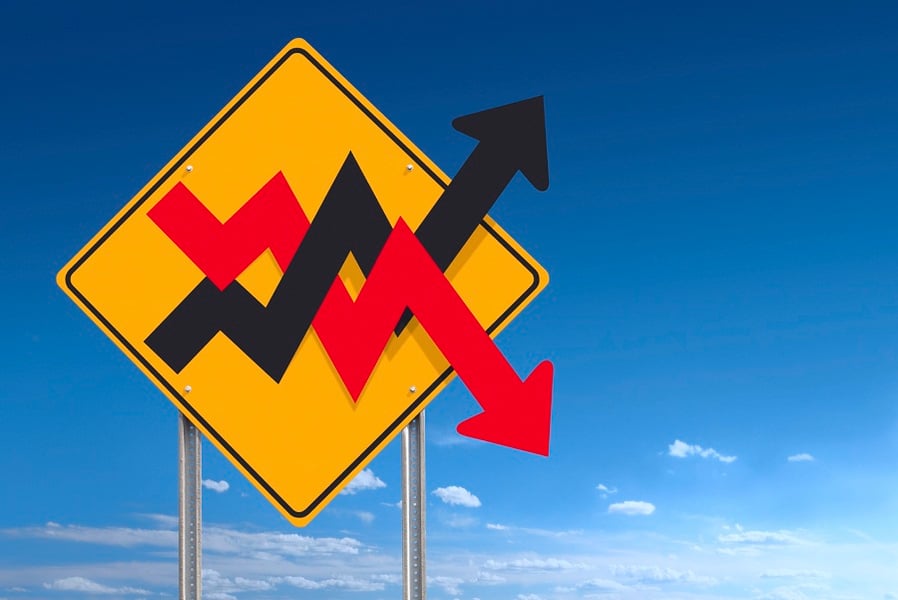Two months ago, we made two broad predictions about the credit markets. The first was that 2019 would be characterized by volatility, with 2018-like
ups and downs, albeit with much greater uncertainty and potential for more severe outcomes.
The second — that this year would be one in which advisers should align themselves even more closely with
active management. True, the VIX index, at the time of writing, is hovering at a peaceable 13.56, a far cry from its late-December level of 36.20, and the S&P 500 has staged a "Lazarus Effect" in its return to life. Still and all, we're sticking to our knitting regarding our broad outlook.
Our view on heightened volatility is that we're coming off a period of money being priced below its natural rate. The artificial rate environment created capital market distortions and poor investment of capital. This mispricing of money resulted in actions that created unhealthy imbalances in the markets. We believe we'll continue to contend with these imbalances and repricing risk throughout 2019.
Our concerns around
passive management are amplified after the moves we saw last year. Many advisers with generic overweights in credit felt significant pain in 2018 and were dealt a friendly reminder of the importance of security selection and security avoidance — both crucial components of
active management. We have definitively moved into a bond picker's market.
Against this background, following are seven themes to which financial advisers should pay attention in 2019.
1. Interest rate redux. The interest rate volatility of 2018 will likely be repeated in 2019 as markets determine the right balance of risk and insurance/protection. The implications of stocks and bonds moving in tandem, which we see as a possibility, will be significant in capital preservation. Many advisers will ask, "Where is the best place to hide?" But really they should be asking, "Where is the best place to be?"
2. Communication is key. The Fed will prove to be a source of calm this year due to its focus on more transparent communication. The marketplace will embrace Federal Reserve Chairman Jerome Powell as a worthy leader, fully cognizant of the Fed's non-mandated but well-recognized role in engineering less volatility in the markets. True, the Fed is going to have to make some difficult decisions around changing inflation expectations in 2019, but it has learned that communication is key to making announcements without spooking the markets. Stay tuned.
3. Yield hogs beware. In 2018, we saw what happens when the complacent yield-seeker is awakened by uncertainty and volatility. We see many more bouts of this unpredictability on the horizon. In fact, it wouldn't surprise us to see a series of downgrades and acceleration of defaults in the credit markets later this year and into next year. Many management teams will be effective in navigating these times; others will fail. We'll again be reminded of leadership's importance and its ability to adapt. Yield hog investors in the late stages of a credit cycle will be frequently reminded of the importance of valuation and risk management. Caveat emptor.
4. Contradiction in terms: The curve is flat. Advisers should remind themselves daily that there have been long periods where curves flattened and remained flat, and yield-seekers must be mindful of the drawdown risk when curves flatten out. Minimal yield pickup comes from extending out the curve, both rates and credit. Being mindful of very diverse future expectations is critical. One expectation comes with a view on slowing economic growth, the other from a view of very strong corporate credit profiles. Currently, the market appears to be indicating both of these scenarios. Downside risk becomes an even more important consideration during these periods of flat curves.
5. Searching for the perfect capital structure. This will be the year of the haves and the have-nots in corporate America. Complacent buyers of credit have fueled more aggressive behaviors by management teams and great complacency in boardrooms. Management will be reminded the best values are found when others are seeking ways to shore up capital structures. This year will herald a new focus on delevering and adjusting capital structures. Over time, these behaviors will accrete to equity holders as bondholders benefit from disciplined moves to reduce leverage.
6. Tweet me to less volatility, please! The
polarization and dysfunction of politics have become commonplace in Washington. In many cases, the banter between the two parties is viewed as comedic. We find little to laugh about in the growing deficits, outstanding debt and leveraging of the country. Implications of the growing debt load concern us and create increased instability and possibly lower levels of confidence in the system. This promises to be an interesting year — one in which politics likely will rattle markets more than economic concerns. In 2019, we're going to learn the two are very intertwined.
7. Capital preservation in focus. The active/passive debate in fixed income will take on greater intensity after the volatility of 2018. The sell-off in rates early in 2018 validated concerns around the index's interest-rate sensitivity. And the rally in rates in Q4, coupled with the spread widening in credit, showed the impact of overall credit growth in the market.
While biased in our position, we believe advisers and their clients will see the importance and value of active fixed-income management, particularly as it relates to capital preservation.
Gibson Smith is founder and CIO of Smith Capital Investors.







